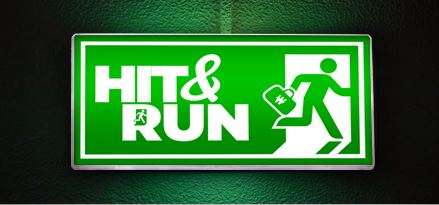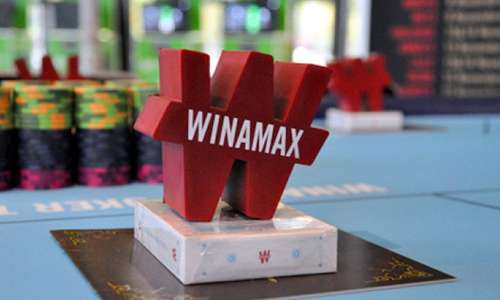Winamax Introduces Hit & Run Satellite Variant
Online poker rooms are always trying to come with something fresh, something new to keep players interested. Most innovations fail, as that’s just what happens when you take chance, but some, like Lottery Sit-and-Go’s and “fast fold” poker, have changed the face of online poker. What French poker room Winamax.fr recently introduced in Hit & Run tourneys probably isn’t going to move the needle all that much, but it is certainly an interesting new spin (no pun intended… really) on satellite tournaments.
In a normal satellite tournament or qualifier, depending on the what the poker room calls it, players are fighting for a ticket into a more expensive tournament. Satellites can be very attractive to low-rollers such as yours truly who might want to enter, say, the PokerStars $200 + $15 Sunday Million coming up this weekend, but don’t have the $215 required to do so. Instead, we can enter a satellite tournament for less money and instead of winning cash, we can win a seat into the Sunday tourney. The number of seats (or tickets) awarded depends on how many people enter the qualifier, as that determines the size of the prize pool.
For example, there is a $1.50 + $0.15 re-buy plus add-on satellite running that pays one seat into the Sunday Million for every $215 in the prize pool. Thus, for every 144 players (143 and a third, to be exact), one person will advance to the Sunday Million. Any money left over after the value of the tickets is taken out of the prize pool is distributed to a handful of the next-best finishers.
What makes satellites unique compared to regular tournament formats is that once the “money” is reached, that is, once the field is down to the places that earn a seat into the next tournament, the match stops. If, in a hypothetical satellite, there are 100 players with five seats to the next tournament awarded, the satellite is over when that sixth-place player is eliminated. The remaining five players all win their tickets. Thus, it does not matter how many chips the first-place player had compared to the second, or compared to the fifth. One person could have a million chips and another could have a thousand and as long as they are amongst the last five in this pretend tourney, they win the same prize. Whereas in a regular tourney, players want to accumulate chips to move up in the money rankings, in a satellite players want to survive and just get into the money however possible. Chip accumulation aids in survival, but a min-cash is the exact same as being the chip leader when the buzzer sounds.
 And that is where Winamax’s Hit & Run tournaments change things up. A Hit & Run is still a satellite or qualifier; it still pays out tickets into a more expensive tournament based on how much money is in the prize pool. But in this case, the position in which a player finishes is not the determining factor in who wins the seats. Instead, players must accumulated a pre-determined number of chips to win a ticket.
And that is where Winamax’s Hit & Run tournaments change things up. A Hit & Run is still a satellite or qualifier; it still pays out tickets into a more expensive tournament based on how much money is in the prize pool. But in this case, the position in which a player finishes is not the determining factor in who wins the seats. Instead, players must accumulated a pre-determined number of chips to win a ticket.
The example Winamax gives is in a €10 Hit & Run tournament that awards €50 tournament tickets, players start with 9,000 chips. To win the €50 ticket, players are required to build their chips stacks up to 50,000 chips. As soon as this happens for a player, he is removed from the tournament, awarded his ticket, and his chips are distributed equally amongst the other players at the table. Once all the tickets have been awarded, the Hit & Run continues until there is a single winner, who receives the leftover cash.
It should be easy for players to keep track of their progress towards a ticket, as chips stacks are obviously very visible. But in case a player doesn’t know what the target stack is, a progress meter is displayed next to each seat at the table, displaying the progress towards the goal in percentage format.
Winamax’s Hit & Run tournaments look like they shift the focus in a satellite from survival to accumulation. This likely means more action as players take shots at building their stacks quickly. After all, there is a finite number of tickets up for grabs, so those who risk waiting for just the right spots risk missing out as others swipe the prizes. Odds are that the tournaments also finish much faster than normal satellites.
All of the Hit & Run tournaments start players with 9,000 chips. The stack objective varies depending on the buy-in and associated ticket value. It appears that in Hit & Run’s in which the ticket value is four times that of the buy-in, the stack objective is 40,000 chips. With a ticket value of five times the buy-in, the objective is 50,000 and six times the buy-in equates to a goal of 60,000 chips.



















COMMENTS